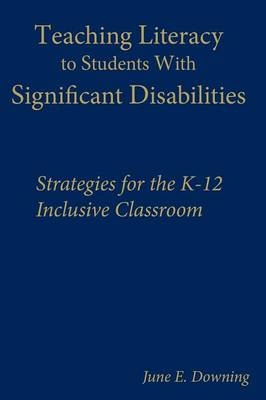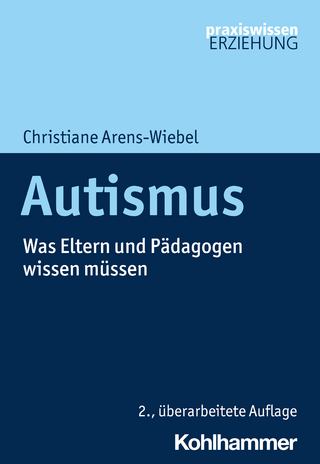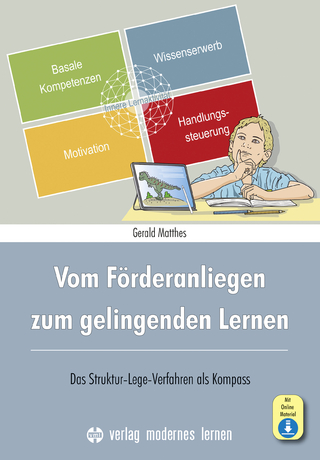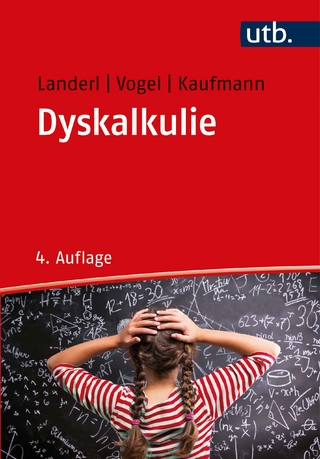
Teaching Literacy to Students With Significant Disabilities
Corwin Press Inc (Verlag)
978-0-7619-8878-6 (ISBN)
Break down literacy barriers to enrich the lives of students with significant disabilities!
All educators and family members would agree that depriving any student of the enhanced self-esteem, independence, social skills, and general quality of life afforded by literacy would be wrong. However, because of the particular challenges-perceived or otherwise-of providing literacy instruction to children and youth with significant disabilities, these students are often overlooked in receiving meaningful experiences and equal access to this aspect of the core curriculum.
Teaching Literacy to Students With Significant Disabilities offers tangible support for obliterating the obstacles to effective literacy instruction, including:
Effective strategies for tailoring literacy materials to students with disabilities
Tactics for adapting state standards and meeting No Child Left Behind (NCLB) and Individuals with Disabilities Education Act (IDEA) requirements
Straightforward chapter summaries, frequently asked questions, Web sites, and other resources that reinforce key points
Easy-to-implement planning and assessment guidelines
Brimming with practical ideas, tips, and examples, this definitive guide offers K-12 educators the research findings and means for creating an inclusive environment that encourages students with significant disabilities to become actively engaged in literacy learning. It empowers teachers, family members, and all team members with creative, sensitive, and all-embracing ways to successfully set and meet realistic communication-development goals that yield lifelong benefits.
June E. Downing is Professor Emerita of Special Education at California State University, Northridge, and prior to that was at the University of Arizona in Tucson, where she did research and prepared teachers to work in the area of moderate, severe, and multiple disabilities. She is a national leader in the field of special education that targets the needs of students with severe disabilities, especially with regard to inclusive education. She has published numerous articles, chapters, monographs, and seven books on students having severe and multiple disabilities. She served for six years on the Executive Board of TASH, an international advocacy organization for individuals with severe disabilities, and was a past president of the California Chapter of this organization—CalTASH as well as AZTASH. She has served as an associate editor of Research and Practices for Persons With Severe Disabilities and currently serves on this board as well as several other professional editorial boards. She is presently serving as an educational consultant, traveling extensively in the United States and abroad to do presentations on various subjects.
Foreword - Douglas Fisher
Acknowledgments
Introduction
About the Author
1. Literacy and a Free Appropriate Public Education
Key Concepts
What Is Literacy?
Literacy and Federal Mandates in Education
Barriers to Literacy Instruction for Students With Significant Disabilities
Attitudinal Barrier
Low Expectations
Limited Opportunities
Limited Means of Accessing Literacy
Limited Time
The Age Factor
Literacy and Quality of Life Issues
Self-Esteem
Self-Determination
Independence
Information Gathering
Organization
Learning
Entertainment
Why Teach Reading to Students With Severe Disabilities?
2. Literacy and Communication
Key Concepts
The Relationship Between Communication and Literacy
Building Relationships
Reading Together
The Benefits of Play Interactions
Emergent Literacy for Students of All Ages
Augmentative and Alternative Communication Devices
Building Shared Experiences for Literacy Development
Documentation of Shared Experiences
Drawings
Photograph Books
Tactile Books
Summary
Frequently Asked Questions
3. Planning Literacy Activities
Key Concepts
General Considerations
Literacy Rich Environments
Benefits of Learning in a General Education Classroom
Access to the Core Curriculum
Not Just Physical Presence
Identifying Literacy Goals
What Are the Literacy Goals of the Individual and the Family?
Determining Present Literacy Skills
Analyzing the Environment and the Need for Literacy Skills
Identifying When Literacy Skills Can be Taught Throughout the Day
Creating Literacy-Learning Opportunities for All Ages
Integrated Related Services
Developing Literacy Materials for Individual Students
Age Appropriateness
Individual Consuderations
Physical Considerations
Visual Considerations
Cultural Considerations
Interesting Material
High Quality
Assistive Technology
Computer Access
Summary
Frequently Asked Questions
4. Teaching Literacy Skills
Key Concepts
Concerns With Some Past Practices
General Considerations When Teaching Literacy Skills
Offering Choices
Following Interest Level
Providing Opportunities
Make Accessible
On the Spot Accommodations
Meaningful Literacy Experiences
The Use of a Daily Planner
Within Task Directions
Self-Monitoring Checklists
Language Experience Stories
Interactive and Fun
Clear Literacy Goals in Mind
Drawing Attention to Conventional Literacy
Balanced Literacy Approach
Specific Instructional Strategies
Draw Attention to the Stimulus and Shape the Response
Model the Behaviors of Reading and Writing
Check for Comprehension
Wait for a Response
Provide Corrective Feedback and Praise
Fade Instructional Support
Teaching Generalization of Skills
Summary
Frequently Asked Questions
5. Evaluating Progress: Next Steps
Key Concepts
Alternative Assessments
Interview
Observations
Review of Past Records
The Link to IEP Goals and State Standards
Adapting State Standards on Literacy
Developing Appropriate IEP Goals and Objectives
Passive Versus Active IEP Goals and Objectives
Standard Linked IEP Objectives
Procedures for Measuring Student Progress
Data Collection
Easy to Use Forms
Portfolio Assessment
Using Data for Instructional Purposed
Determining Next Steps
Review Literacy Goals
Raise Expectations
What Are the Logical Next Steps?
Summary
6. The Future for Literacy Access and Instruction
Key Concepts
Improved Strategies to Support Literacy Goals
Strengthening Early Intervention Services
Future Advances in Technology
Bridging the Research-to-Practice Gap
Impact on Personnel Preparation
Impact on Quality of Life
Resources
Glossary
References
List of Tables
List of Figures
Index
| Erscheint lt. Verlag | 12.5.2005 |
|---|---|
| Verlagsort | Thousand Oaks |
| Sprache | englisch |
| Maße | 177 x 254 mm |
| Gewicht | 570 g |
| Themenwelt | Sozialwissenschaften ► Pädagogik ► Sonder-, Heil- und Förderpädagogik |
| ISBN-10 | 0-7619-8878-5 / 0761988785 |
| ISBN-13 | 978-0-7619-8878-6 / 9780761988786 |
| Zustand | Neuware |
| Informationen gemäß Produktsicherheitsverordnung (GPSR) | |
| Haben Sie eine Frage zum Produkt? |
aus dem Bereich


